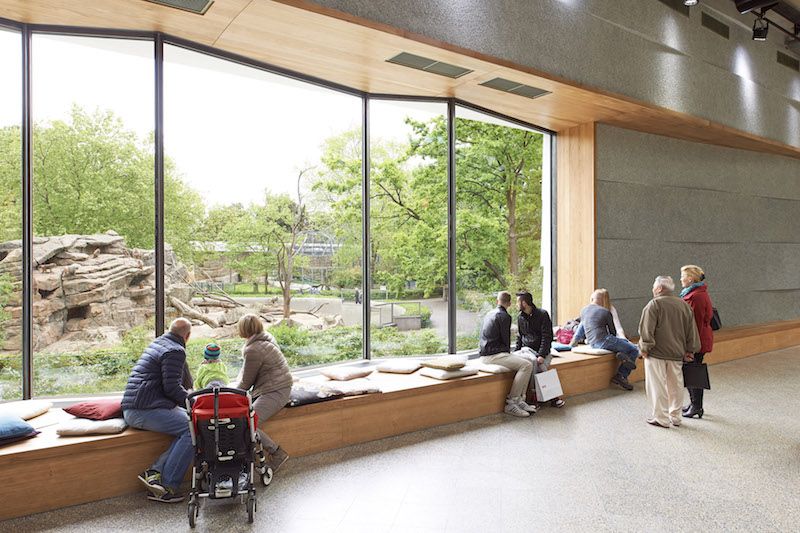The mall and the shopping experience are changing as the retail sector grapples with increased competition from online sales and rapidly developing consumer expectations. Retailers are increasingly adding attractions, retailtainment, to the mix.
Steve Shah, Senior Director Mixed Use + Entertainment at FORREC Ltd., outlines his five challenges to “un-malling the mall”.
to “un-malling the mall”.
In an increasingly cutthroat retail environment, even some of the mightiest of retailers are closing their doors and turning out the lights. It’s easy to point the finger at online shopping. It’s harder to figure out what to do about all those empty square feet of bricks and mortar left behind. I recently looked at this trend and the kinds of things our clients are considering to ensure experiential retail works for them.
Nobody wants to see empty storefronts. The challenge is to find tenants that meet visitors’ new expectations. Stores that offer experiences along with the products they sell go a long way in providing the engagement opportunities that customers seek. In London, England, the recently opened flagship store for footwear brand Dr Martens has a social media booth. New York’s 5-storey Nike Soho store combines digital and physical, allowing guests to shoot hoops on an actual half-court surrounded by high-def screens that simulate famous US basketballs courts.
So, where do you start, understanding that there is always risk at starting something new?
1. Themed retail, new food concepts and gaming experiences generate excitement – retailtainment
Because they’re usually pre-packaged and branded concepts, these plug & play formats can be up and running quickly. So there is obvious appeal for both the developer and the guest. Known entities with a proven track record are highly desirable, low-risk tenants. An ever-changing roster of pop-up stores can also keep empty spaces filled. This means that customers come in specifically to shop for what’s new.
2. Create a feeling as much as you create a place
Changing the paradigm changes people’s perceptions and expectations and, if done right, creates a visceral connection. Germany’s Bikini Berlin is an example of a mall that has reinvented itself as the place to be ‘ and not just to shop. By maximizing its heritage-listed architecture and carefully curating a unique mix of boutiques, restaurants, exhibits, pop-ups and events, Bikini Berlin has positioned itself as being on the cutting edge of fashion, culture, food and art to the point where people feel they have to go or they’ll miss out.
https://www.youtube.com/watch?v=jzJ5o4IhUPs
3. Generate FOMO ‘ find a reason for being that resonates with people
Ultimately the goal is to have people own the space emotionally ‘ think of it as theirs. It should be the first place they think of when they want someplace to go. It doesn’t hurt to feed social media’s Fear of Missing Out (FOMO) frenzy. This can be done by building-in the capacity for constant change through pop-up shops, pop-up attractions, exhibits and events. Bespoke food and beverage experiences provide more social media fodder. Amenity spaces can be designed to be irresistible Instagram and Snapchat photo ops.
4. Give an old space new life
Bringing an old building up to sustainable green standards could also generate positive press that puts the developer on the right side of history. And investing in the site, adding cultural elements, is also perceived as an investment in the community.
5. Welcome from the outside in
Changes to the exterior fa ade can also make the mall more welcoming and less introverted. By facing aspects of the development outwards towards the city, the community is encouraged to be a part of the place. Furthermore, balancing the amount of public and the leased space contributes to more engagement; public space has tremendous value.
It goes without saying that there are always barriers to un-malling the mall ‘ most of all, fear of change after doing it one way for so long. However, the financial investment often makes it more comfortable to hold on to old models. And yes, working within an existing space has challenges; circulation patterns could be difficult and retrofitting outdated infrastructure could be expensive.
But with the right modifications to flow, the movement of people, new and more creative tenancies, and careful programming, a shopping centre can be completely changed to become a more experiential destination. To borrow the words of Charles Darwin, “It’s not the strongest species that survive, but the ones most responsive to change.” In other words, adapt or die.
Main and bottom image courtesy Bikini Berlin.








